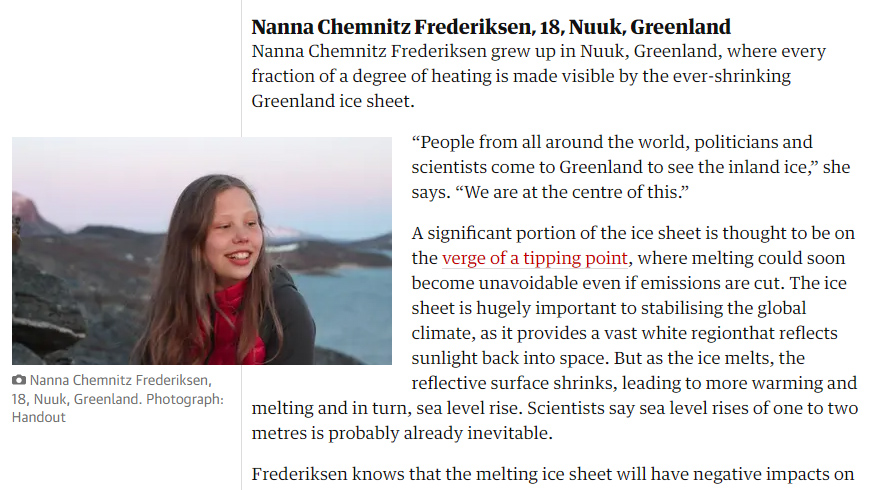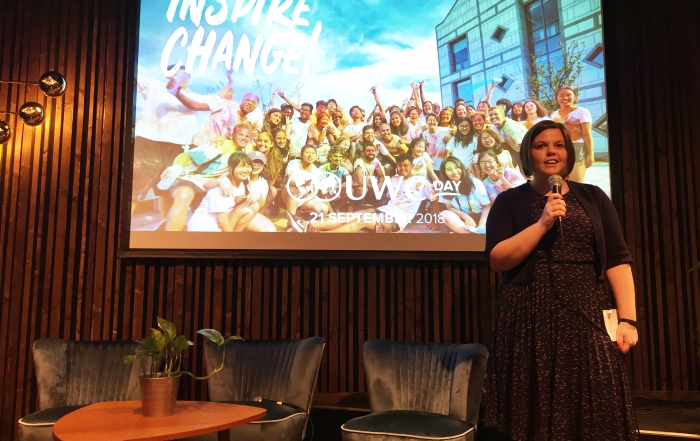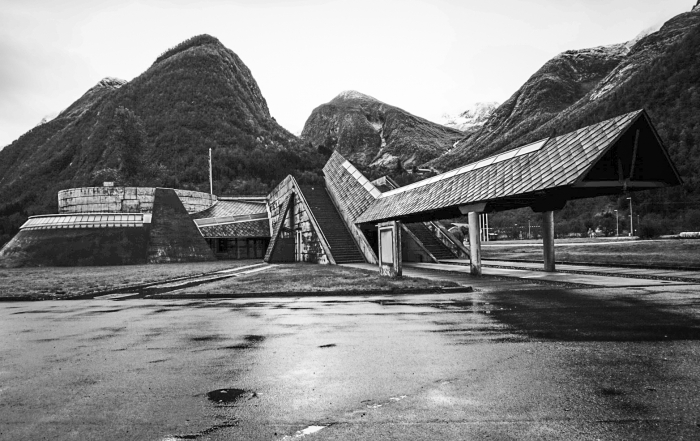“People from all around the world, politicians and scientists come to Greenland to see the inland ice,” she says. “We are at the centre of this.”
A significant portion of the ice sheet is thought to be on the verge of a tipping point, where melting could soon become unavoidable even if emissions are cut. The ice sheet is hugely important to stabilizing the global climate, as it provides a vast white region that reflects sunlight back into space. But as the ice melts, the reflective surface shrinks, leading to more warming and melting and in turn, sea level rise. Scientists say sea level rises of one to two metres is probably already inevitable.
Frederiksen knows that the melting ice sheet will have negative impacts on communities across Greenland, especially in northern settlements such as Qaanaaq where permafrost melting is destabilizing homes and roads and impacting how fishers and hunters operate.
But her real concern lies on the impact it will have globally. “I am not so scared of what the effects of the melting of ice in Greenland will be,” Frederiksen says, “It scares me what effect it can have for the rest of the world.”
Latest News
Ashoka Changemakers
Ashoka Changemakers is a global organizations that builds and cultivates a community of change leaders. Members collaborate to transform institutions and cultures worldwide for the good of society. UWC RCN was selected last year as [...]
Introducing the Glocal Challenge
Fifteen of our students and educators have started a journey of change, with the help of Karen O`Brien and her team at cCHANGE. To start of it all, Karen gave our yearly Environmental Thor Heyerdahl [...]
Glacier Seminar – Natur og Ungdom
As members of the Natur og Ungdom (Nature and Youth) organization we have the amazing opportunity to join multiple seminars and events every year. This seminar was about glaciers as climate indicators. Ironically, due to [...]




